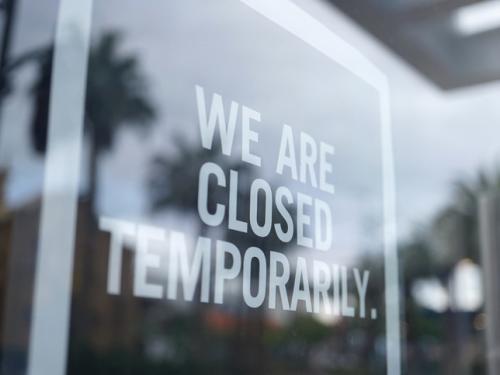If you live in the Bay Area of California, chances are you are looking to get out. Why? If I had to guess,I would say sky-high real estate prices, excessive taxes and the massive homeless problem. And it's not just California residents who are looking for greener pastures, there’s a BIG trend now for people - millennials specifically - who are looking to relocate while still working remotely for their present employer. The good news: there are smaller US cities offering cash incentives for workers to move there.
Prior to the whole Coronavirus thing, millennials were already looking to leave the big cities. Check out this September 2019 quote from CNBC.
Data released by the U.S. Census Bureau earlier this week show that some 27,000 millennials between the ages of 25 and 39 left big cities like New York, San Francisco and Houston in 2018 for greener, and less expensive, pastures, the Wall Street Journal reports. Chicago, Las Vegas, Washington, D.C. and Portland, Oregon, are also seeing large numbers of residents leave.
That marks the fourth year in a row that there has been a noticeable decline in the millennial populations in major cities.
And where are they moving? To combat the ever-increasing housing costs and lack of access to family-friendly amenities, to nearby suburbs, mostly, Axios reports. But the Journal notes other, more affordable, metropolitan areas are also gaining millennials, including cities like Austin, Columbus, Ohio, Los Angeles, San Diego and Seattle.

Recently, there have been articles citing how the pandemic could push the trend of millennials moving out of big cities even further. For example, here’s a quote from Politico. The date of this piece is May 13, 2020.
We are about to witness a great experiment. The world population has temporarily reset according to nationality or country of residence. At some point (hopefully soon), the lockdown will end. Travel restrictions will be lifted, and planes will start flying again. At the same time, people may end up with more say over where they live than ever before, as companies consciously choose to maintain low overhead, canceling real estate leases and favoring the lower overhead cost of virtual teams. In this new normal, where will people buy one-way tickets from … and to?
Public health is top of mind, and reason No. 1 why people might be looking to make a move. The coronavirus pandemic has divided the world into “red zones,” which failed to effectively test, quarantine and treat Covid-19 patients, and “green zones,” which performed well under the circumstances and flattened the curve. The daily news tells us which is which—and can help you choose which green zone to move to.
Chances are, you might want to abandon crowded cities. It’s now obvious, if it weren’t before, that staying in big cities can be bad for your health. The density of social contact in urban areas—home to almost 60 percent of the global population—makes them Petri dishes for the spread of contagious diseases.

And now in the aftermath of Covid-19, there’s a new reason why people may want to leave the big cities, as the defunding of police precincts increases vulnerability to crime. While factions are promoting that fewer police will result in less crime, studies have proven the exact opposite to be true. For example, The Atlantic shared approaches to policing that reduce crime.
First, increasing numbers of police officers can reduce crime. Increased police in the 1990s brought down crime by about 5 percent (this could range from 0 to 10 percent). Police employment increased dramatically in the 1990s, rising 28 percent. One major contributor was the 1994 Crime Bill, which provided funding for 100,000 new local officers. A body of empirical research has found that simply having more officers on the streets, even if they are not arresting or stopping anyone, can be a crime deterrent.
And research from Steve Mello, a Postdoctoral Research Fellow at the NYU Furman Center and Princeton Ph.D. candidate, bears this out. To quote the Washington Free Beacon…
Specifically, Mello focuses on the increase in police funding that came when a newly elected President Barack Obama signed the American Recovery and Reinvestment Act into law, allocating some $2 billion to the Department of Justice for police hiring grants, mostly through the Department's Community Oriented Policing Services (COPS) program. COPS grants were issued based on a "fuzzy cutoff," meaning a city's chances of receiving a grant jumped substantially if its scoring by DOJ (a combination of factors including crime rate and current police force size) passed a certain threshold. That fuzzy cutoff creates two natural groups for comparison: Those that received COPS funding and those that didn't.
Mello demonstrates that, while "high and low scoring cities follow[ed] similar trends in police and crime prior to the application year," cities above the threshold saw a 3.6 percent increase in police. This translated into a 4.8 percent decline in violent crimes and a 3 percent decline in property crimes for cities over the threshold, over average, an effect which Mello ties directly to the increase in police.
Those declines are driven especially by police effects on robbery, larceny, and auto theft, Mello notes. But police also exert a notable downwards pressure on murder rates, with the analysis finding a particularly robust negative response: For every 11 police officers hired, one murder is prevented.

Bending to political pressures, Minneapolis officially voted to defund the Minneapolis Police department. In New York, as many as 600 police officers could be leaving the city in the near future. How long before other major metropolitan areas follow suit? No one can say for certain. However, the speculation is enough to seek greener pastures. While that may be a great source of anxiety for all concerned, it represents a golden talent attraction opportunity for small cities and even locations abroad. What follows is a list of links to information regarding remote worker relocation programs and similar initiatives designed to attract talent.
- The Great Tulsa Remote Worker Experiment
- MAINE - Educational Opportunity Tax Credit
- Remote tech worker? You could make $10K relocating to the Shoals
- Vermont Wants To Pay You $10,000 To Move There And Work
- Tempted To Move Out Of The U.S.? New Zealand Wants To Help You Escape
- Savannah, Georgia Is Offering A Relocation Incentive To Lure Tech Workers
- Challenge Detroit
- Alaska - Permanent Fund Division
You know, as I reflect on this trend, I can’t help but wonder what the impact on the recruiting world might be.
Consider this: if the people being recruited are already working from home, what’s the advantage of working for you? What makes your company so special? Why should they disrupt their lives at a time when so many people are afraid to quit their jobs? I suspect we’re going to see a drastic reduction in force among recruiters who cannot sell opportunities to candidates. Those recruiters who can’t convey empathy or leverage interpersonal skills will not be able to connect with people they need to recruit, so their productivity (and usefulness) will diminish. Other situations that will contribute to an unprecedented purge of recruiters leaving the industry include recruiters who cannot:
- Develop strong relationships with hiring managers
- Negotiate with hiring managers over candidate requirements
- Manage hiring manager expectations as they relate to the current talent supply
- Navigate a shifting landscape driven by economic realities, company mandates and expectations from all sides
I also think that recruiters who are good with people and masters at leveraging data will thrive in this market, most of all. Why? Well, they’ll be studying things like worker migrations, analyzing what is attracting people to those locations and using that information to fine tune their sales pitches and enhance their employer brand.
But, that’s just me. What do you think?



